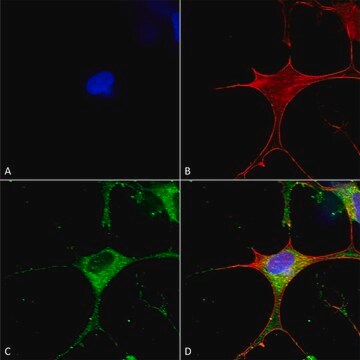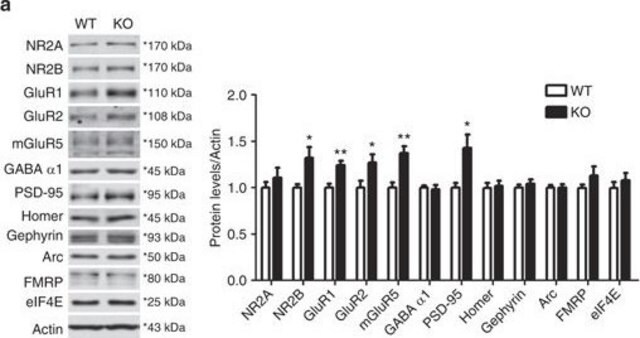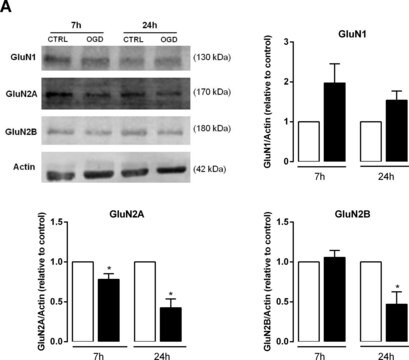05-432
Anti-NR1 Antibody, CT
Upstate®, from mouse
Synonym(s):
Grin1, NMDA R1 receptor C1 cassette, glutamate receptor, ionotropic, N-methyl D-aspartate 1
About This Item
Recommended Products
biological source
mouse
Quality Level
antibody form
purified immunoglobulin
antibody product type
primary antibodies
clone
monoclonal
species reactivity
rat
species reactivity (predicted by homology)
human, mouse
manufacturer/tradename
Upstate®
technique(s)
immunocytochemistry: suitable
immunoprecipitation (IP): suitable
western blot: suitable
isotype
IgG
NCBI accession no.
UniProt accession no.
shipped in
wet ice
target post-translational modification
unmodified
Gene Information
human ... GRIN1(2902)
rat ... Grin1(24408)
General description
Specificity
Immunogen
Application
4 μg of a previous lot immunoprecipitated NR1 from 500mg of rat brain microsomal protein preparation.
Immunocytochemistry:
An independent laboratory has shown positive staining in QT-6 cells, transfected to express NR1, which were fixed with 4% paraformaldehyde/4% sucrose in PBS and in nontransfected cultured rat neurons.
Note: Do not boil the microsomal preparation. Incubate at room temperature for 30-45 minutes.
Quality
Western Blot Analysis:
0.5-2 μg/mL of this lot detected NR1 from 20 μg of rat brain microsomal protein preparation (Catalog # 12-144).
Target description
Physical form
Storage and Stability
Other Notes
Legal Information
Not finding the right product?
Try our Product Selector Tool.
Storage Class
10 - Combustible liquids
wgk_germany
WGK 1
Certificates of Analysis (COA)
Search for Certificates of Analysis (COA) by entering the products Lot/Batch Number. Lot and Batch Numbers can be found on a product’s label following the words ‘Lot’ or ‘Batch’.
Already Own This Product?
Find documentation for the products that you have recently purchased in the Document Library.
Our team of scientists has experience in all areas of research including Life Science, Material Science, Chemical Synthesis, Chromatography, Analytical and many others.
Contact Technical Service







